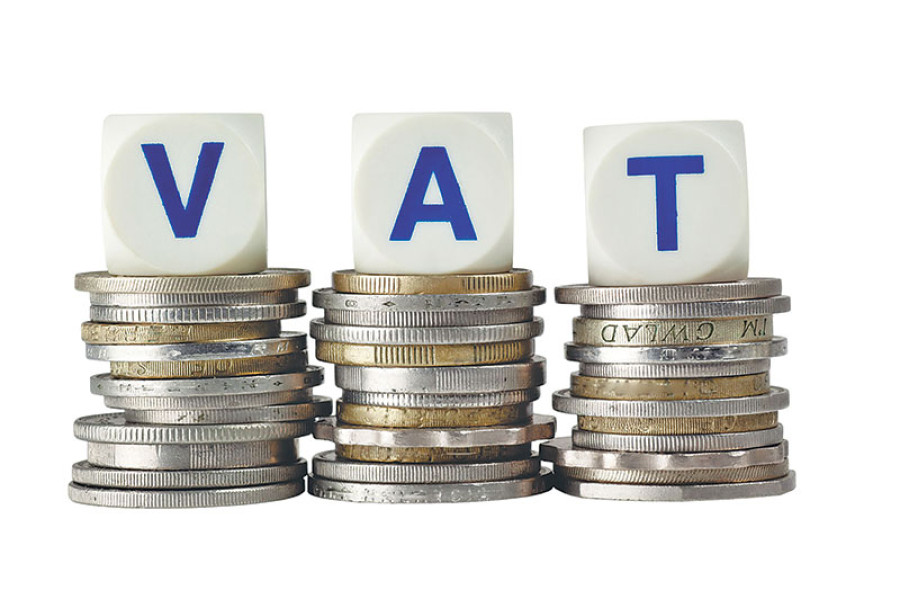Opinion
VAT vs GST
India adopted goods and service tax, but that does not mean Nepal has to follow suit
Goods and service tax (GST) became a hot topic in Nepal after it was adopted by India last July. The question is not what impact GST will have on Nepal’s economy, but what the repercussions of incorporating GST will mean. Speaking at a programme at the Federation of Nepalese Chambers of Commerce and Industry (FNCCI), Finance Minister Yubaraj Khatiwada said that the time had come to discuss which system of taxation will be better for Nepal: value added tax (VAT) or GST.
Why did India shift from VAT to GST? Due to the federal structure in India, various taxes were divided between the states and the centre. There were two major indirect taxes: VAT on goods and service tax on services. They were collected by the states and the federal government respectively. There were different VAT laws in different states. The system was complicated for interstate transactions with central sales tax (CST) being charged by the centre. Discussions on GST started in 2000 and it was finally implemented in 2017. Now there are GST and customs.
Poles apart
The reform measure was aimed at combining multiple taxes into one, removing the cascading effect (tax on tax, levying excise and levying VAT on it), curbing inflation, easing compliance with the introduction of a single tax, creating uniformity across states, creating a transparent online system, increasing participation of taxpayers and controlling tax evasion, among others. Sounds interesting! Should we adopt it too?
Though we are compared with India because of our cultural and geopolitical similarities, our economy and structure are poles apart. We don’t have a complex tax mechanism among provinces that needs radical change. VAT is charged on both goods and services, which means it is GST. If the target is to remove the cascading effect of tax and curb inflation, we recently moved to a federal structure and are unsure of the total cost. If we plan to remove different taxes and move to GST, some taxes may be replaced. But this can be done only by increasing the GST rate which can be done in the current VAT structure too.
An online system is considered to be essential for implementing GST in India. Questions are still being raised if India was ready for it due to lack of internet, computers and other technology across the country. How about Nepal? Are we ready? We have started an online system at government departments. Really? Having an online system but having to submit hard copies too defeats the purpose. For instance, don’t you have to go for tax deducted at source (TDS) return verification with a hard copy after filing e-TDS?
Wait and watch
Has India benefitted by shifting to GST? GST being a destination-based tax, industrial states will lose revenue to consuming states. The government had to guarantee no loss of revenue to any state with a 14 percent growth rate per year for five years. India has adopted GST, but there is confusion even among professionals about slab rates, return filing and constant changes brought by the government. People are yet to understand and comply with the new system. We need to wait for at least five years to find out the total cost of implementation, and whether India has benefitted from it or not.
Finance Minister Khatiwada must have brought up the subject at the FNCCI programme to gain the confidence of the business community about a simpler single tax mechanism. The government is conscious about taking every step necessary to increase revenue, be it by changing the rate, increasing the tax base or changing the system. It is evident that implementing VAT has been really challenging. The practice of maintaining proper records is rare, and smuggling and under-valuation are very common. This is not due to a flaw in the VAT system, but the inability to implement it well. How well a system functions depends on the capacity of the government to implement it efficiently.
A wise step for the government will be to look into various ways to bring all businesses into the ambit of VAT. Incentivise the people to comply with VAT laws. The current thinking about VAT compliance is that it means making your product 13 percent dearer than that of your competitors. Every one of us has felt that we are paying 13 percent extra when we ask for the VAT bill. In such an environment, hoping for an efficient VAT system is farfetched. Change should begin from the customs points. The government tried that but it failed. The way we tried to change things might have failed, but reform is required not in the system but in its implementation.
Sharma is Charter Accountant (CA)




 17.12°C Kathmandu
17.12°C Kathmandu









%20(1).jpg&w=300&height=200)

